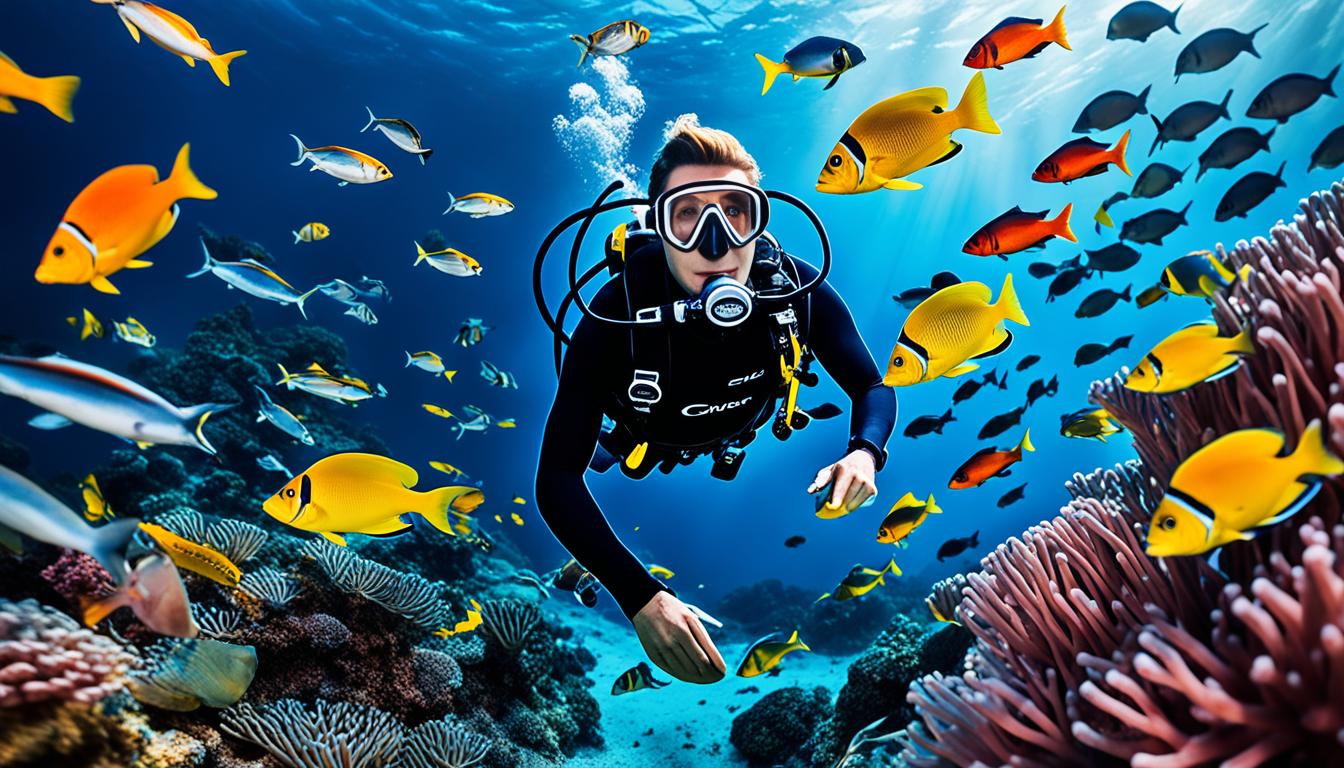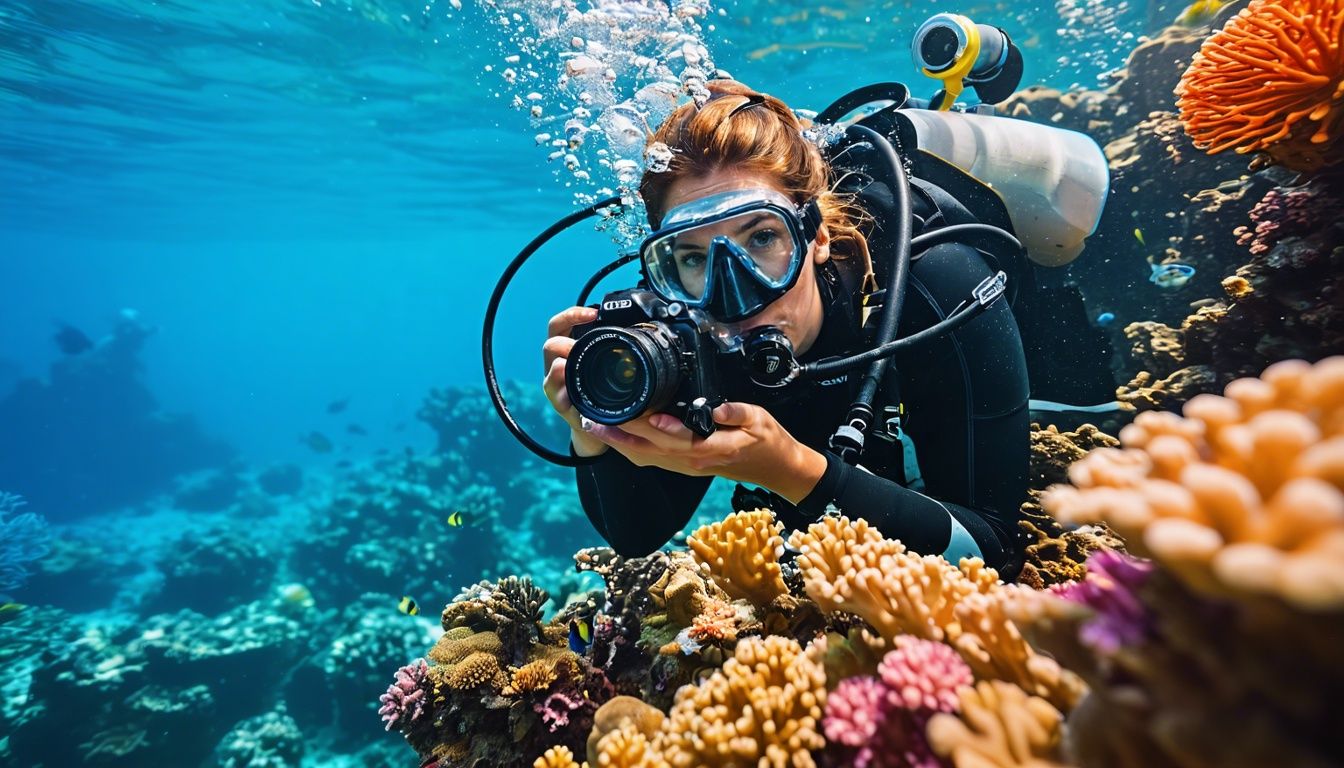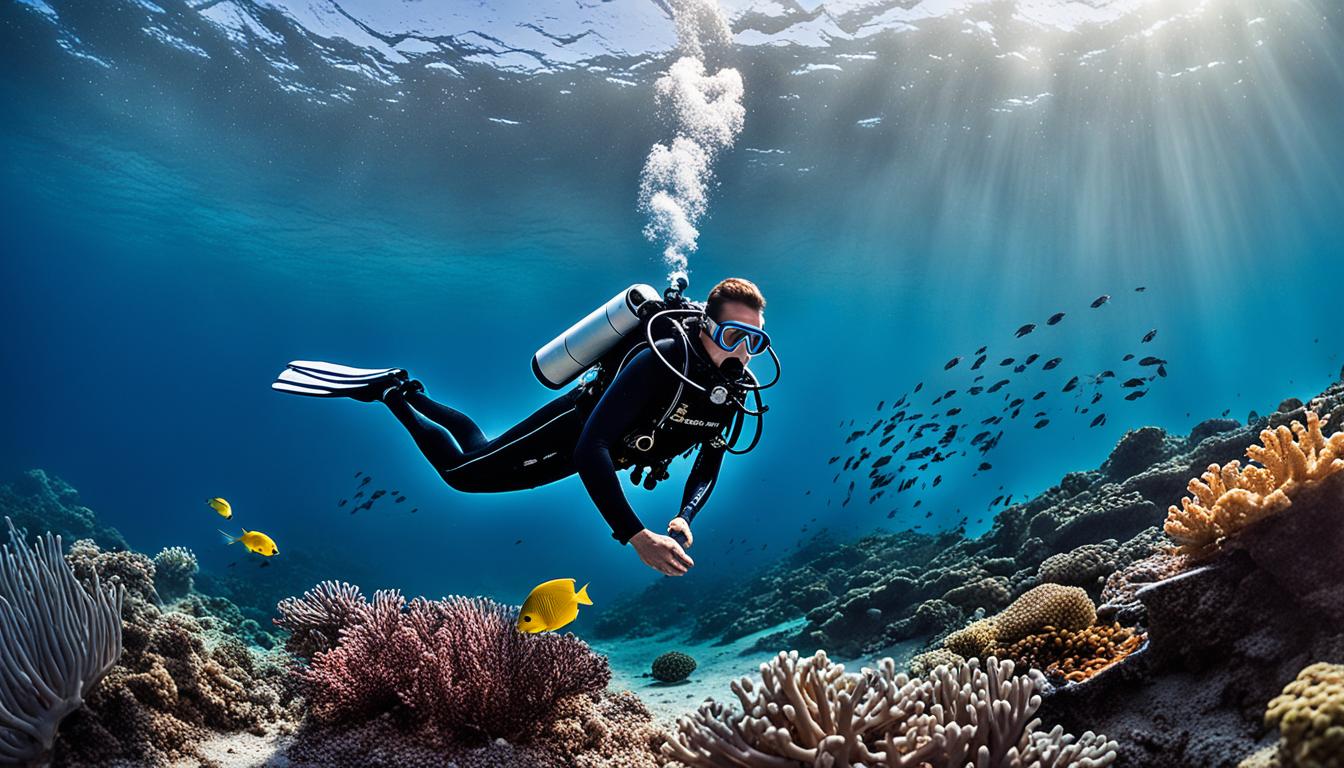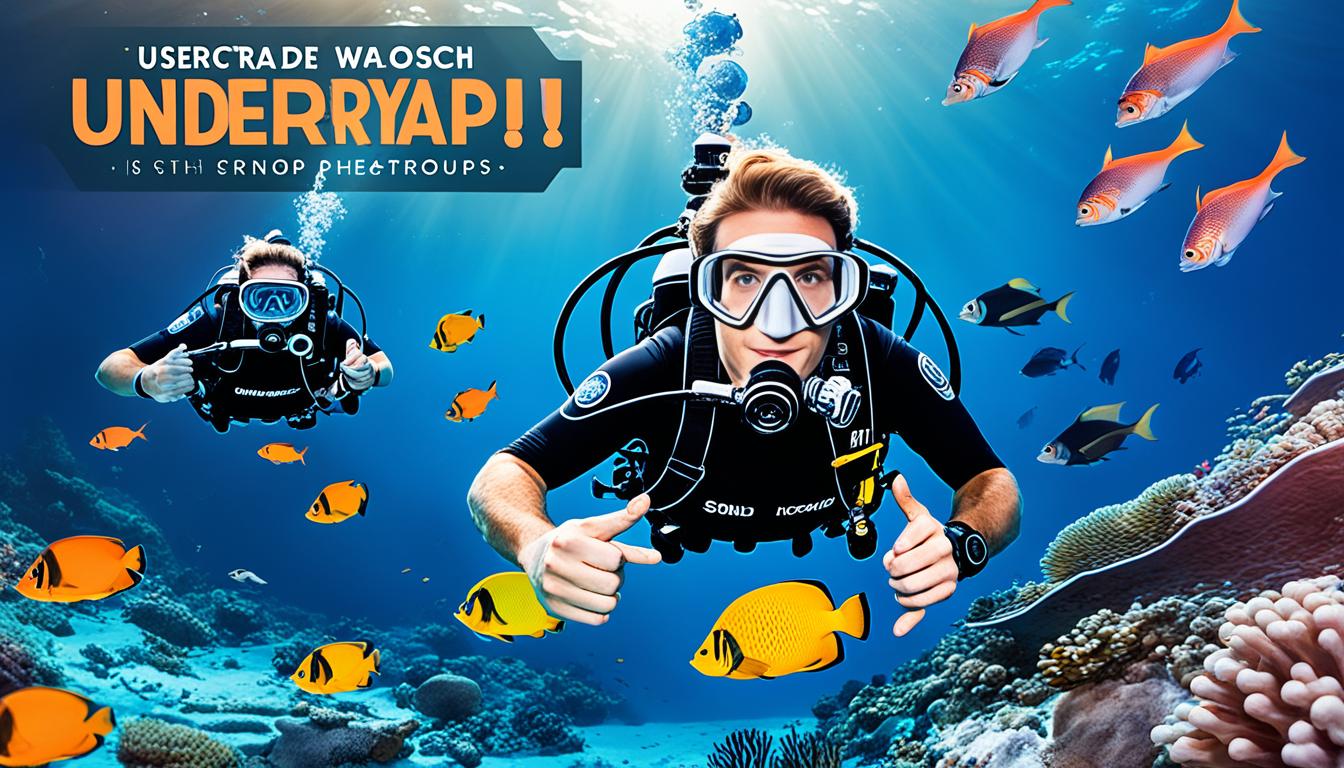Underwater photography is a captivating art form, allowing us to explore the mesmerizing beauty of the hidden world beneath the surface. However, capturing stunning underwater images can be challenging due to the effects of water on light and colors. That’s where post-processing comes in. By utilizing various editing techniques and software, we can enhance our underwater photos, bringing out the vibrant colors and intricate details that might have been lost in the aquatic environment.
Whether you are a professional photographer or an enthusiastic hobbyist, post-processing your underwater photographs is essential to create visually appealing and breathtaking imagery. In this article, we will delve into the importance of post-processing underwater photos, the steps involved in this process, and explore the editing techniques and tips to achieve outstanding results.
Key Takeaways:
- Post-processing is crucial for enhancing underwater photographs and correcting the effects of water on colors and contrast.
- Software programs like Adobe Photoshop and Lightroom offer powerful tools to edit and improve underwater images.
- Adjusting exposure, color grading, fixing contrast, and removing backscatter are key techniques in underwater photo editing.
- Lightroom provides a range of features for editing underwater photos, including white balance adjustments, cropping, and keywording.
- By mastering the art of post-processing, you can take your underwater photography to the next level and showcase the true beauty of the underwater world.
The Importance of Post-Processing Underwater Photographs
Underwater photography presents unique challenges due to the behavior of light and the absorption of colors by water. When photographing underwater scenes, the photos often appear low-contrast and very blue. However, with the power of post-processing, we can correct these effects and bring back the true colors and details of the underwater world.
Post-processing plays a crucial role in enhancing the quality of underwater photos and making them visually appealing. By utilizing professional aquatic photo retouching techniques, we can transform ordinary underwater shots into stunning images that capture the beauty of the ocean depths.
Water tends to make photos low-contrast and very blue. Post-processing allows you to correct these effects and bring back the true colors and details of the underwater scenes.
With post-processing, we have the ability to adjust various aspects of the image, such as exposure, white balance, and contrast. These adjustments can help to bring out the vibrant colors, intricate details, and create a more balanced composition. Additionally, post-processing gives us the opportunity to remove distractions and minimize imperfections, resulting in professional-looking underwater photos.
Professional aquatic photo retouching techniques involve utilizing software tools such as Adobe Photoshop and Lightroom. These programs provide a wide range of editing options, including color correction, exposure adjustments, and noise reduction, to name just a few. These powerful tools enable us to achieve the desired outcome and bring our underwater photos to life.
Benefits of Post-Processing for Underwater Photography
The benefits of post-processing underwater photographs are numerous, and they include:
- Enhancing colors: Post-processing allows us to correct the color cast caused by water, bringing back the true colors of the underwater world.
- Improving contrast: By adjusting contrast levels, we can make the details in the photo pop and create a more visually striking image.
- Removing distractions: Post-processing techniques enable us to remove unwanted elements from the photo, such as backscatter or debris, resulting in a cleaner and more captivating composition.
- Highlighting details: With post-processing, we can bring out the intricate details hidden in the shadows and highlights, ensuring every aspect of the image is crisp and clear.
By embracing the art of post-processing and employing professional aquatic photo retouching techniques, we can elevate our underwater photography to new heights. Through the creative manipulation of colors, contrast, and details, we can convey the mesmerizing beauty of the underwater world and leave a lasting impression on viewers.
| Enhancing Underwater Photos | Photo Editing Tips | Professional Aquatic Photo Retouching |
|---|---|---|
| Correct colors and bring back true hues | Adjust exposure, contrast, and white balance | Utilize software tools like Adobe Photoshop and Lightroom for fine-tuning |
| Enhance details and highlight intricate elements | Remove distractions and minimize imperfections | Transform ordinary shots into stunning images that capture the beauty of the underwater world |
| Create a visually striking and aesthetically pleasing composition | Utilize professional aquatic photo retouching techniques | Elevate underwater photography to new heights |
Steps for Post-Processing Underwater Photographs
Post-processing underwater photographs is a multi-step process that allows us to bring out the true beauty of these aquatic images. By using software tools like Adobe Photoshop and Lightroom, we can enhance the quality of our underwater photos and make them visually stunning.
Step 1: Adjusting Exposure
One of the first and most important steps in post-processing underwater photographs is adjusting the exposure. This ensures that the subject is properly lit and the highlights and shadows are well balanced. By fine-tuning the exposure, we can bring out the details and ensure our underwater photos look their best.
Step 2: Color Grading
Underwater images tend to have a blue hue due to the absorption of colors by water. Color grading is a crucial step in correcting this and bringing back the true colors of the underwater scene. In software like Photoshop and Lightroom, we can adjust the white balance, curves, and levels to achieve the desired colors and make our photos vibrant and visually appealing.
Step 3: Fixing Contrast
Fixing the contrast is another important step in post-processing underwater photographs. It helps to bring out the details and enhance the overall appearance of the image. By adjusting the contrast, we can make sure that the subject stands out and the image has a more dynamic range.
Step 4: Making Local Adjustments
When post-processing underwater photos, it’s essential to make local adjustments to specific areas of the image. This can involve fine-tuning the exposure, highlights, and shadows in certain regions to ensure that all elements in the photo are well-balanced and properly enhanced.
Step 5: Removing Backscatter
Backscatter refers to debris particles that appear in the water and can greatly affect the quality of underwater photos. Removing backscatter is a crucial step in post-processing to achieve clean and clear images. Software tools like Photoshop provide tools and techniques to eliminate backscatter and ensure the final result is free from any unwanted distractions.
Step 6: Final Adjustments
Before finalizing the post-processing of our underwater photos, we need to make sure that the exposure and contrast are just right. This involves making any necessary adjustments to ensure the image looks balanced and visually appealing.
By following these steps and utilizing the features of software tools like Photoshop and Lightroom, we can effectively post-process our underwater photographs and bring out the true beauty of the aquatic world.
Comparison of Photoshop and Lightroom for Underwater Photography Editing
| Software | Features | Advantages |
|---|---|---|
| Photoshop | Advanced editing capabilities Layer-based editing Precision selection tools |
Allows for detailed retouching Offers extensive control over individual elements Ideal for complex image manipulation |
| Lightroom | User-friendly interface Non-destructive editing Efficient workflow management |
Simplifies photo organization and cataloging Enables quick batch editing Seamlessly integrates with other Adobe software |
Editing Techniques for Underwater Photos
When it comes to editing underwater photos, utilizing the right techniques is key to achieving stunning results. Whether you are a professional photographer or an enthusiast, here are some essential editing techniques that will help you bring out the best in your ocean pictures.
1. Adjusting Exposure
Properly exposing your subject is crucial in underwater photography. Adjusting the exposure allows you to control the brightness and darkness of specific areas in the image, ensuring that all details are visible. By fine-tuning the exposure settings, you can enhance the overall impact of your photo and highlight the natural beauty of underwater scenes.
2. Color Grading for Correcting the Blue Hue
Underwater images tend to have a bluish tint due to the way water absorbs colors. To correct this blue hue and restore the natural colors of the scene, color grading techniques can be applied. By adjusting white balance, curves, and levels, you can bring back the vibrant colors and tones that were lost in the underwater environment. This helps create a more visually appealing and realistic representation of the underwater world.
3. Fixing Contrast for Enhanced Details
Underwater photos often lack contrast, making them appear flat and lacking in detail. By fixing the contrast during the editing process, you can bring out the hidden details and make your images visually captivating. Adjusting the contrast enhances the tonal range of your photos and adds depth, making the subject stand out against the background.
4. Local Adjustments
Sometimes, specific areas of an underwater image may require individual adjustments. This is where local adjustments come in handy. Whether it’s brightening a specific area, adding more color to a certain element, or removing any distracting elements, local adjustments allow you to fine-tune the details in your photo. With precision editing, you can ensure that every part of your image looks its best.
5. Removing Backscatter
Backscatter refers to the unwanted particles and debris that are often present in underwater photos. Cleaning up backscatter is crucial to achieving a clean and professional look. By utilizing editing tools, such as spot healing or clone stamping, you can remove these distractions and achieve a clear and captivating final image.
6. Ensuring the Right Exposure and Contrast
Before finalizing your underwater photo, it’s important to review the exposure and contrast levels. Ensuring that the exposure is well-balanced and the contrast is properly adjusted will result in an image that accurately represents the underwater scene. This final touch guarantees that your edited photo truly showcases the beauty and magic of the underwater world.

Incorporating these editing techniques into your workflow will elevate your underwater photography to new heights. Whether you prefer using professional software like Adobe Lightroom or other editing tools, mastering these techniques will help you create breathtaking ocean pictures that capture the awe-inspiring beauty of the underwater realm.
Tips for Editing Underwater Photos in Lightroom
When it comes to editing your underwater photos, Adobe Lightroom offers a powerful set of features and tools that can significantly enhance the quality of your images. Here are some tips to help you make the most out of Lightroom and bring your underwater shots to life:
- Shoot in RAW format: To have maximum flexibility in post-processing, it is recommended to shoot your underwater photos in RAW format. This allows you to make more extensive adjustments to the image without compromising its quality.
- Adjust white balance: Underwater images often have a blue color cast due to the absorption of light by water. Lightroom provides precise controls for adjusting white balance, allowing you to correct the color temperature and bring back the true colors of the underwater scene.
- Enhance contrast and exposure: Use Lightroom’s tone curve and exposure adjustment tools to fine-tune the contrast and exposure of your underwater photos. This will help bring out the details and make the image more visually appealing.
- Work with clarity and vibrance: Adjusting the clarity and vibrance sliders in Lightroom can further enhance the details and colors of your underwater photos. Use these tools sparingly to avoid overdoing the effect.
- Crop and straighten: Cropping is a useful technique in composition, allowing you to improve the overall look of your underwater photos. Lightroom’s crop tool enables you to remove distracting elements and create a more balanced composition.
- Organize with keywords: Lightroom provides an option to add keywords to your photos, making it easier to organize and search for specific images in your library. Use descriptive keywords related to the location, subject, or any other relevant details of your underwater photos.
By utilizing these Lightroom editing techniques and following these photo editing tips, you can take your underwater photography to the next level and achieve stunning results. Don’t be afraid to experiment and find your own style when it comes to editing underwater photos. Remember, the goal is to enhance the beauty of the underwater world and create captivating images that tell a story.
Editing underwater photos in Lightroom can transform your images and bring out the vibrant colors and intricate details captured beneath the surface. With the right techniques and tools, you can create breathtaking underwater compositions that leave a lasting impression.
Conclusion
Post-processing underwater photographs is a crucial step in the workflow of underwater photographers. By correcting color and exposure issues caused by water, we can bring out the true beauty of our aquatic images. With editing techniques using software like Photoshop and Lightroom, we have the power to enhance the quality of our underwater photos, making them vibrant and visually appealing.
By following the steps and tips outlined in this article, we can master the art of post-processing underwater photographs and take our underwater photography to the next level. Whether adjusting exposure, color grading, or making local adjustments, the use of these software programs allows us to bring out the best in our underwater images.
So, dive into the world of underwater photography editing and unlock the full potential of your underwater photos. With a little post-processing magic, you can transform your images into stunning works of art that capture the awe and wonder of the underwater world.
FAQ
Why is post-processing important for underwater photographs?
Post-processing is important for underwater photographs because it allows you to correct for the effects of water and bring out the details in the images. It helps adjust white balance, contrast, and exposure to make the underwater photos vibrant and appealing.
What challenges does underwater photography present?
Underwater photography presents unique challenges due to the behavior of light and the absorption of colors by water. Water tends to make photos low-contrast and very blue. Post-processing helps correct these effects and bring back the true colors and details of the underwater scenes.
What are the steps involved in post-processing underwater photographs?
The steps for post-processing underwater photographs include adjusting exposure, color grading to correct for the blue hue, fixing contrast, making local adjustments, removing backscatter, and ensuring the final exposure and contrast are right. Software like Adobe Photoshop and Lightroom can be used for editing underwater images.
What editing techniques can be used for underwater photos?
Editing techniques for underwater photos include adjusting exposure, color grading, fixing contrast, making local adjustments, and removing backscatter. These techniques help enhance the quality and appearance of the underwater images.
How can Lightroom be used for editing underwater photos?
Lightroom offers a range of features and tools that can be utilized to enhance the quality of underwater photos. It allows for adjustments in white balance, contrast, exposure, clarity, vibrance, and saturation. Lightroom also provides options for cropping the photos and keywording them for better organization.
Why is post-processing important in underwater photography?
Post-processing is important in underwater photography because it allows for the correction of color and exposure issues caused by water. It helps bring out the true beauty of the aquatic images and enhances their visual appeal.
How Can Post-Processing Techniques Improve Underwater Photographs?
Post-processing techniques can greatly enhance underwater photographs. By using noise reduction techniques for sharpening shots, photographers can minimize graininess and enhance clarity in their images. These techniques help bring out the natural beauty of underwater scenes, resulting in stunning and vibrant photographs.




